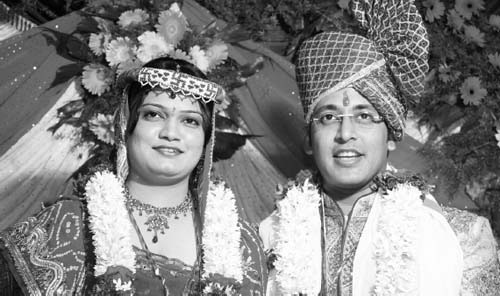HinduismCustoms and Rituals |
How do Hindus ritualize marriage? |
Traditional Hindu families continue the ancient practice of arranged marriage and generally do not countenance the kind of dating practices prevalent among non-Hindus in the United States. Marriage within one’s caste remains a major concern for most Hindus, whether within India or abroad. An extended period of betrothal usually follows the initial arrangements between the families, and includes the exchange of gifts and chaperoned meetings of the betrothed.
Weddings typically occur in the early evening, after sunset, in a venue chosen by the families. In the temple, the home, or at a local hotel, one or more priests preside over the ceremony, reciting set ritual texts from the scriptures. In India one priest often appears as a representative for each family. Astrological consultation still often determines the specific auspicious timing of the ceremony. Wedding ceremonies begin with the family of the bride symbolically “giving away” their daughter. After the community greets the new couple, the officiant chants prayers while the bride and groom sit before a fire holding hands. Concluding the formal ritual, the bride and groom express consent by taking the “seven steps” symbolizing energy, vitality, success, happiness, wealth (traditionally measured in livestock), auspicious turning of the seasons, and friendship. Extended receptions generally follow the ceremonies.

A young couple in a traditional Hindu marriage ceremony.
